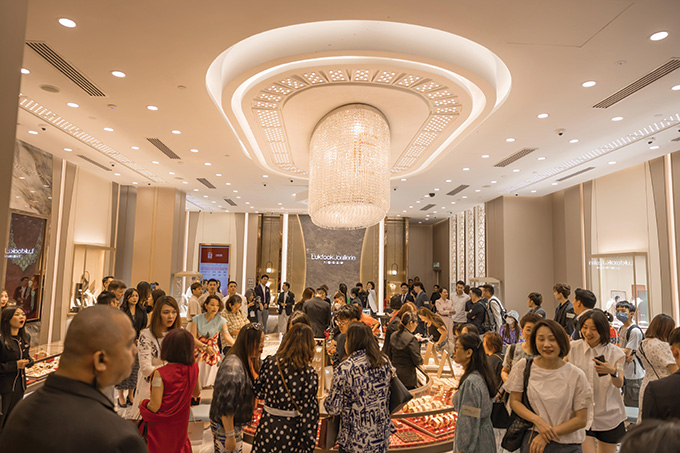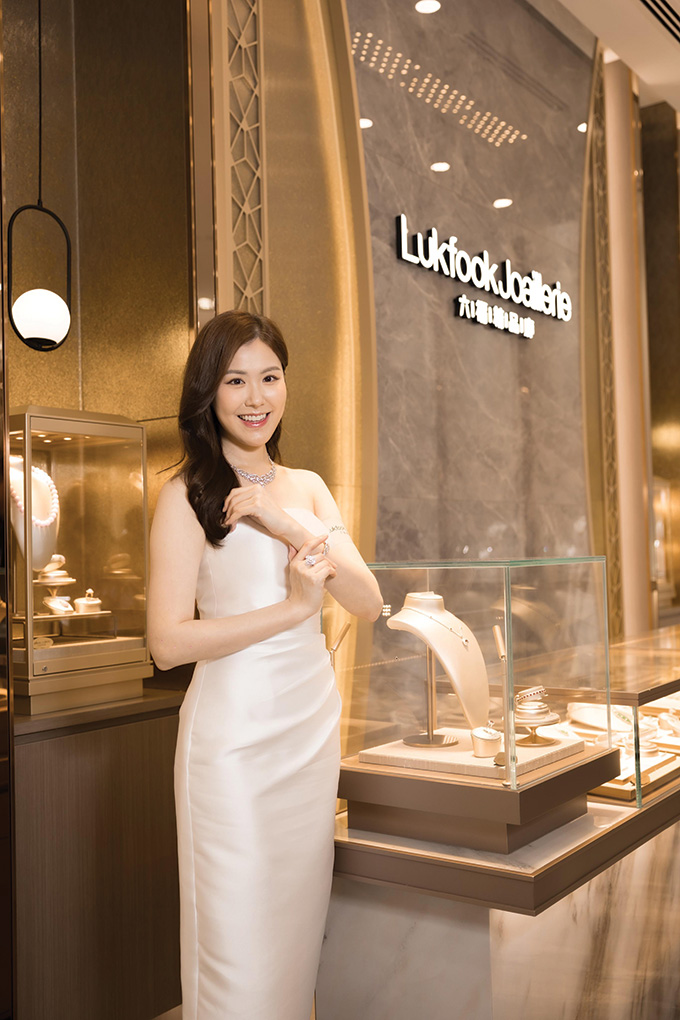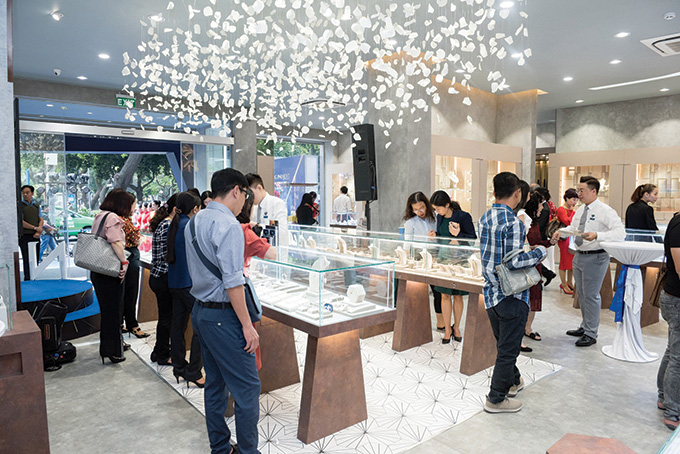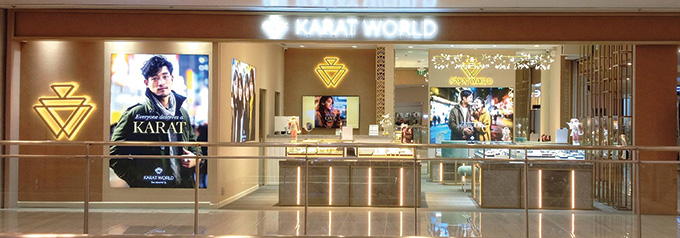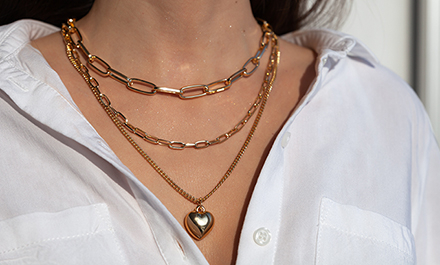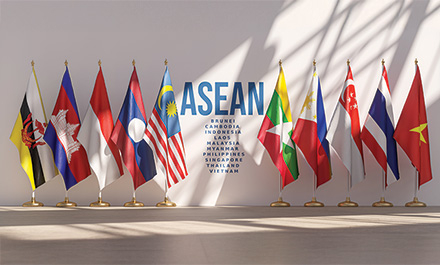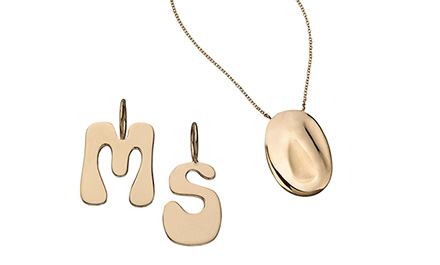Southeast Asia’s potential as a jewellery consumption base has not gone unnoticed. Regional chain stores are expanding their presence in the region, while local jewellers adjust strategies to sustain demand in their ever-evolving markets.
This article first appeared in the JNA September/October 2024 issue.
In recent years, the gem and jewellery industry has been training its sights on Southeast Asia. And why not indeed? The region has a population of around 700 million, making it collectively one of the world’s biggest consumer markets.
Data and business intelligence firm Statista projected revenues generated in the Southeast Asian jewellery market to reach US$9.28 billion in 2024. It also expects the market to expand at a compounded annual growth rate of 3.41 per cent from 2024 to 2028.
The culture of jewellery is alive and well in each of the Southeast Asian countries. Gold wedding jewellery sets are part of the Malay tradition, with local Malaysians favouring 22-karat gold. The region’s Chinese populations have an equally intense love affair with gold as their counterparts in Greater China. And in the Philippines, many newborn baby girls leave the hospital with pierced ears, inculcating a tradition of jewellery from the onset.
Chain reaction
Asia’s bigger jewellery retail chains recognise the region’s immense potential. Chow Tai Fook Jewellery Group recently announced the appointment of Gabriela Ferreira as general manger, International, to lead its strategic expansion in Southeast Asia and other markets.
According to Chow Tai Fook, it is pursuing growth opportunities in Southeast Asia driven by a range of compelling dynamics including the rising middle class and projected economic growth in the region, coupled with the recovery in tourism and sustained local market demand for jewellery.
Kent Wong, managing director of Chow Tai Fook Jewellery Group, said Ferreira's appointment aligned with the group’s strategic direction to expand in popular travel retail markets and in areas with a significant customer population who understand and appreciate Chinese culture, art and beauty.
As of June 30, 2024, the group has seven points of sales (POS) in Singapore, seven in Malaysia, three in Thailand, two in the Philippines, two in Vietnam and one in Cambodia.
Earlier this year, Luk Fook Holdings (International) Ltd (Lukfook) also expanded its retail footprint in the region with the opening of its first store in Malaysia, a Lukfook Joaillerie in Kuala Lumpur.
According to Lukfook Group Chairman and CEO Wong Wai Sheung, the group is always committed to exploring markets with growth potential. “Southeast Asia, with its booming tourism industry, offers an array of potential long-term investment opportunities. The new shop will enable the group to expand its POS footprint and enhance brand awareness in the Southeast Asian market,” he remarked.
Lukfook first entered the Southeast Asian market in 2010. As of February 2024, it has a presence in Cambodia, Malaysia, the Philippines, Laos and Thailand.
Vietnam prospects
Gold jewellery is much favoured in Vietnam, according to Le Yen, vice president of the Vietnam Gemstone Jewelry & Arts Craft Association and vice chairman of the ASEAN Gems and Jewellery Trade Association (AGJA).
“Diamond jewellery is also highly sought after by Vietnamese consumers. The advent of lab-grown diamonds has however affected market confidence in the natural diamond segment, particularly since we do not have a well-established certification institute to distinguish between the two,” she shared.
Vietnamese jewellery conglomerate Phu Nhuan Jewelry Joint Stock Company (PNJ) is also seeing solid prospects in its local market. “Jewellery demand remains high because it is suitable for investment as well as for daily use,” the company told JNA. “High-end consumers in Vietnam look for products from large and reputable brands in the market. They increasingly gravitate towards jewellery with modern, sophisticated, creative and highly artistic designs.”
This customer segment also pays greater attention to the product’s narrative, in-store displays and the skill and enthusiasm of sales associates. Upmarket consumers also demand after-sales policies that are commensurate with the value of their purchase.
According to PNJ, Vietnam’s jewellery retail market saw a period of consolidation after the pandemic. A challenging business environment coupled with prolonged lockdowns from May to November 2021 led many retailers to leave the market or operate at a loss.
“Economic and retail slowdowns coupled with plummeting consumer confidence posed major challenges post-pandemic. Although Vietnam’s mid-range and high-end jewellery market holds room for growth, particularly after two years of market fluctuation with the departure of various smaller businesses and independent shops, there remains significant hurdles,” said PNJ.
The group, which had dominated the jewellery market in major cities prior to the pandemic, has since been expanding its customer base to smaller provinces.
“Additionally, new shopping habits driven by the pandemic have made online channels a popular platform for Vietnamese consumers, prompting us to introduce online shopping services across different digital platforms,” said PNJ. These include free shipping, fast deliveries within three hours and promotional programmes.
Philippine strategies
Jewellery retailers in the Philippines have also had to shift gears during the pandemic, introducing initiatives that have turned into valuable revenue streams to this day.
Fine jewellery retail chain Karat World intensified its e-commerce activities by expanding its offerings online and established counters at warehouse clubs to catch foot traffic during the lockdowns.
“Selling jewellery at warehouse clubs was truly an out-of-the-box concept, one that won us a local retail award for innovation. We realised during the Covid-19 lockdowns that we had to be where the people were. At the time, they could only leave their residences to buy groceries, so that is where we went,” explained Felix Gorriceta III, president of Karat World.
The company started working with S&R warehouse club and established a space with three to four counters in some of their branches. This enabled Karat World to move merchandise that was otherwise just stocked in its stores.
These initiatives continue to bear fruit for the company. Online sales now account for 10 per cent of Karat World’s business, and Gorriceta aims to increase this to 15 per cent over time.
And Karat World is now present in more than 10 S&R warehouse club branches across the country, with opportunities for expansion into more locations.
“The fast-moving items at these outlets are earrings, pendants and necklaces that can be worn every day. We do not sell anything more than US$500 at these locations,” said Gorriceta.
Local complexities
Aside from international jewellery brands, the Philippine jewellery retail sector consists mostly of family-run chain stores, local neighbourhood jewellery retailers and a unique system of resellers who sell jewellery to individuals and accept instalment payments. Live selling of jewellery is also gaining traction. The last two business models are particularly popular, as many mass and middle-class consumers still find jewellery retail stores intimidating. At the same time, the country also has upper middle-class to high-end consumers and high-net-worth individuals who favour luxury jewellery.
Karat World has more than 30 branches across the Philippines, with merchandise carefully curated for market preferences in each location. It caters largely to what Gorriceta calls the “mass-tige” market – mass consumers aged 21 to 45 who want some prestige in their lives. “Our tagline is 'You Deserve It' The rationale is that everyone deserves jewellery because they worked hard for it,” he explained.
The company tailors its operations and business approach to Filipino societal norms. As many consumers find jewellery stores intimidating, Karat World ensures the design of its outlets is welcoming and its staff highly accommodating. It also takes a leaf from the attractive payment terms of the well-entrenched reseller system by offering special instalment packages for credit-card payments for its jewellery.
Another Karat World brand is Jewelry Box, which is available in smaller cities. The merchandise mix in these stores is less extensive than at Karat World branches and feature mostly basic and classic gold jewellery pieces as opposed to diamond jewellery.
Early this year, Karat World opened a 100-square-metre flagship store in One Ayala, an upscale mixed-use complex in Makati City, the country’s main business district. These premium stores, numbering three at present, carry more one-of-a-kind pieces and designer collaborations, catering to high-end customers.
For its part, Ocampo’s Fine Jewellery caters largely to long-time patrons and, often, their children aged 30 and above. It has six branches in major cities in the Greater Manila area as well as over 20 in-store displays at key branches of its popular SilverWorks jewellery retail brand.
Charles Chan, consultant for Ocampo’s Fine Jewellery, said, “We have always been positioned as a heritage brand with almost 100 years of retail and expert experience in the Philippine jewellery industry.”
Consumer preferences
Gemstones are the best-sellers at Ocampo’s Fine Jewellery, with Chan citing steady demand for its classic diamond double halos with either a sapphire or emerald centre stone. “High-end consumers account for 50 per cent to 70 per cent of our total sales. They gravitate towards our gemstone jewellery pieces, featuring diamonds with emeralds or sapphires. Gemstones have been our main point of differentiation from other brands for almost a century,” he noted.
The Philippines is a gold-loving country hence gold pieces move well across chain stores and locations. At Ocampo's Fine Jewellery, lightweight options have become popular, along with easy-to-wear, bold earrings or necklaces that can be worn as everyday jewellery. Its original gold jewellery pieces dating back to the 1920s also remain in high demand.
Gorriceta noted consumers below 40 years of age lean towards modern designs and often opt for jewellery choices of celebrities and influencers. Older Filipinos tend to prefer classic pieces.
“We curate our collections carefully based on customer data since preferences vary in different parts of the Philippines and sometimes, even in different branches in one city. All our branches however carry our engagement and wedding rings as the bridal segment is our main revenue generator,” Gorriceta said.
Market trends
Chan observed that Filipino consumers have embraced hybrid shopping post-pandemic, browsing pieces online then collecting their purchase or buying these at physical stores. Older generations, however, still prefer to visit brick-and-mortar stores.
Younger customers now demand new designs and service features, creating new market segments in the process, he continued. “Gen Z consumers who shopped online for small jewellery items then are now upgrading to investment pieces. We are thus expanding the reach of our fine jewellery offerings by introducing gold jewellery and small-carat-size diamonds in our younger market-driven SilverWorks shops,” Chan said.
He also observed a change in the buying patterns of Filipinos. Before the pandemic, purchase intent was determined largely by occasions, with New Year’s Day, Valentine’s Day, Mother’s Day and Christmas generating the most sales. The “YOLO” or “You Only Live Once” mentality took over during the Covid years. This “I deserve this” mindset continues to drive purchases nowadays.
“Rewarding oneself is an all-time sales driver. Our clientele – the millennials – are the ones who celebrate milestones, from small wins and big moments to engagements and weddings. Since we offer a wide price range, their preferences range from necklaces to diamond jewellery pieces,” disclosed Chan.
Sustainable action
Karat World jewellery is largely sourced from Europe. Gorriceta cited trust, quality and sustainability credentials as his main criteria when choosing suppliers.
“The most important factor is meeting the owner of the company, whether an established factory or a small-time manufacturer, to determine whether we have harmony and rapport,” he revealed. "I am out to make a long-term business relationship. I need to be able to trust my supplier.”
Price and quality come next. Gorriceta usually pays a visit to the factory of Karat World suppliers to examine their production process and labour practices.
Sustainability credentials are just as important. Karat World is placing increasing emphasis on the ethical and sustainable sources of materials along with ecofriendly packaging. Its supplier partners must also be members of the Responsible Jewellery Council, said Gorriceta.





